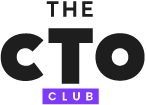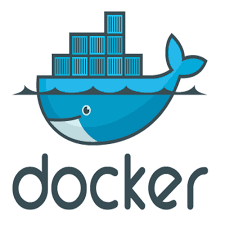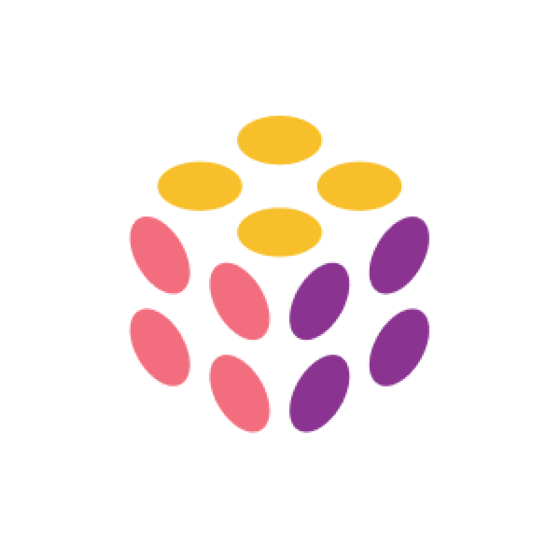10 Best Identity And Access Management Solutions Shortlist
Here's my pick of the 10 best software from the 25 tools reviewed.
Our one-on-one guidance will help you find the perfect fit.
Managing user access shouldn’t feel like a constant security risk, but for many IT teams, it often does. Maybe you’re struggling with employees using weak passwords, tracking down abandoned accounts that pose security threats, or juggling multiple authentication methods across cloud and on-prem systems. You need strong security, but it can’t come at the expense of efficiency—your team still needs to access the right systems without jumping through unnecessary hoops. With so many IAM solutions out there, finding the right balance of security, usability, and automation can be a challenge.
I’ve spent years working in technology leadership, helping businesses secure their environments without slowing down operations. The best IAM solutions don’t just enforce security—they automate access control, simplify authentication, and give IT full visibility into who has access to what, and why. In this guide, I’ve broken down the top IAM tools that help organizations stay secure, compliant, and efficient, so you can find the right solution for your needs.
What Is An Identity And Access Management Solution?
Identity and access management solutions (IAM) are frameworks that streamline and secure the process of granting authorized users access to specific resources in an organization. These systems manage user identities, implement identity-as-a-service, establish admin roles, secure cloud IDaaS solutions, and implement zero-trust policies to ensure that the right people access the right resources for valid purposes.
Typically used by IT teams in enterprises, IAM solutions help safeguard digital assets, monitor user activities, and maintain regulatory compliance. Their functions span from simple password resets to intricate workflows in multi-cloud environments, ensuring that a company's digital boundaries remain both flexible and secure.
Below is a list of additional identity and access management solutions that I shortlisted but did not make it to the top 12. Definitely worth checking them out.
Best Identity And Access Management Solutions Summary
| Tool | Best For | Trial Info | Price | ||
|---|---|---|---|---|---|
| 1 | Best for global teams | Free trial + demo available | From $29/month | Website | |
| 2 | Best for automating access processes | 30-day free trial | From $3/user/month (billed annually) | Website | |
| 3 | Best for bulk user account creation | 30-day free trial | From $7/user/month (min 5 seats) | Website | |
| 4 | Best for just-in-time admin access | 14-day free trial | Pricing upon request | Website | |
| 5 | Best for cross-platform user management | Free plan available (up to 10 devices) + Free demo available | From $2/device/month | Website | |
| 6 | Best for multi-factor authentication | Not available | Website | ||
| 7 | Best for uncovering shadow IT | Free demo available | Pricing upon request | Website | |
| 8 | Best for workforce-specific solutions | Not available | From $6 per user per month (billed annually) | Website | |
| 9 | Best for Microsoft suite compatibility | Not available | Pricing for Microsoft Entra Verified ID is upon request. | Website | |
| 10 | Best for Amazon ecosystem integration | Not available | Pricing upon request | Website |
-

Docker
Visit WebsiteThis is an aggregated rating for this tool including ratings from Crozdesk users and ratings from other sites.4.6 -

Pulumi
Visit WebsiteThis is an aggregated rating for this tool including ratings from Crozdesk users and ratings from other sites.4.8 -

GitHub Actions
Visit Website
Best Identity And Access Management Solutions Reviews
Deel IT is a platform designed to help you manage and automate your global IT operations across more than 130 countries. It streamlines processes like onboarding and offboarding, ensuring your team members have the necessary equipment and software from day one.
Why I Picked Deel IT: Deel offers a robust multi-factor authentication (MFA) system. By enforcing MFA, Deel IT adds an extra layer of security, ensuring that only authorized users can access your company's resources. This feature is crucial in protecting sensitive data and maintaining compliance with various regulations. It also has role-based permissions that allow you to assign specific access levels to users based on their roles. By implementing role-based permissions, you can prevent unauthorized access to critical systems and data.
Standout features & integrations:
Other features include certified data erasure, which ensures that all sensitive information is securely removed from devices during offboarding or decommissioning. This process helps maintain data privacy and compliance with global regulations. Additionally, Deel IT offers real-time device tracking, allowing you to monitor the location and status of your IT assets worldwide. Some integrations include Hubstaff, QuickBooks, Google Workspace, Slack, JIRA, Microsoft 365, NetSuite, Salesforce, HubSpot, Microsoft Dynamics CRM, Microsoft Teams, and Zendesk.
Pros and cons
Pros:
- Strong security features, including MFA and role-based permissions
- Comprehensive device lifecycle management
- Efficient global equipment procurement and deployment
Cons:
- Some features may require additional customization
- Doesn't offer more advanced IT features
Zygon is a modern identity governance platform that helps IT and security teams manage user access across all applications.
Why I Picked Zygon: One reason I picked Zygon is its ability to detect and manage shadow IT. It can identify unmanaged identities and applications, including those created without IT's knowledge. This helps you gain control over all access points and reduce security risks. I also like its automation features that let you set up workflows that handle account provisioning and deprovisioning across all your apps. This ensures that users have the right access at the right time and that access is revoked when needed.
Standout features & integrations:
Other features include dynamic filtering and tagging of identities, which lets you organize and act on specific groups of users. Zygon also provides real-time alerts when discrepancies are found, so you can address issues quickly. Some integrations include n8n, Make, MS Teams, Google Workspace, Entra ID, Slack, Microsoft 365, and Okta.
Pros and cons
Pros:
- Offers instant notifications for discrepancies
- Automates identity lifecycle processes
- Provides a consolidated view of all identities and access points
Cons:
- Limited visibility into historical changes
- Could offer more native integrations
ManageEngine ADManager Plus is a comprehensive software designed for managing Active Directory (AD) environments, offering a range of features that simplify user and group management as well as reporting.
Why I Picked ManageEngine ADManager Plus: One of the most notable aspects of ADManager Plus is its ability to simplify Active Directory (AD) management tasks. This includes user provisioning, de-provisioning, and administration, which are essential for maintaining an organized and secure IT environment. The tool also supports bulk user creation, allowing administrators to create multiple user accounts in just a few minutes.
Standout features & integrations:
ManageEngine ADManager Plus excels with other features like workflow automation, which automates repetitive tasks and approval processes. Another standout feature is its role-based access control, which enhances security by implementing granular access controls based on user roles. Integrations include ServiceDesk Plus, ServiceNow, Zendesk, Freshservice, Jira, Zoho People, BambooHR, Ultipro, and Workday.
Pros and cons
Pros:
- Automates repetitive tasks
- Bulk creation, modification, deletion, and restoration of Active Directory objects
- Robust role delegation features,
Cons:
- Potential integration challenges with certain third-party applications
- The tool offers limited customization options for advanced users
Scalefusion OneIdP is a conditional access and identity management platform that integrates with Unified Endpoint Management (UEM) to secure user and device authentication across your organization.
Why I Picked Scalefusion OneIdP: I picked Scalefusion OneIdP because of its strong focus on conditional access management. It’s particularly useful for enforcing security policies that validate both user identity and device compliance before granting access. I also appreciate its ability to combine identity management and device security in a single platform, which helps reduce the complexity of managing multiple tools. Its just-in-time admin access is another standout, allowing you to grant elevated privileges temporarily without long-term security risks.
Standout Features & Integrations:
Fˇeatures include multi-factor authentication (MFA), conditional single sign-on (SSO) that validates device status in real time, and unified dashboards for device and identity management. Scalefusion OneIdP also supports continuous access evaluation to ensure security compliance remains up-to-date. Some integrations include Google Workspace, Microsoft Entra, Amazon Web Services (AWS), Cisco Duo, Okta, Salesforce, Bamboo HR, Slack, Notion, HubSpot, Figma, Zoom, and Asana.
Pros and cons
Pros:
- Strong device-based security enforcement
- Supports multi-factor authentication (MFA)
- Broad third-party integration support
Cons:
- Higher pricing for some users
- Limited advanced customization options
JumpCloud is an efficient Directory-as-a-Service platform that manages users across various systems, applications, and networks. Its emphasis on cross-platform compatibility ensures that businesses can streamline user access across multiple systems regardless of their platform.
Why I Picked JumpCloud: In determining the right identity management tools, JumpCloud stood out primarily because of its comprehensive cross-platform capability. I chose it because it offers unparalleled versatility in managing users across various operating systems and devices, distinguishing itself from competitors. For businesses that operate on diverse platforms and require coherent user management, JumpCloud emerges as the top choice.
Standout features & integrations:
JumpCloud's features, such as centralized directory services, multi-factor authentication, and device management, offer a holistic approach to user management. Furthermore, it integrates effortlessly with numerous applications and platforms, from Windows and macOS to Linux, as well as SaaS applications and IaaS providers.
Pros and cons
Pros:
- Centralized directory services simplify user management
- Robust multi-factor authentication enhances security
- Comprehensive cross-platform support
Cons:
- Some advanced features are restricted to premium plans
- Custom integrations could be challenging for niche software
- Initial setup might require a bit of a learning curve
Ping Identity offers a robust identity platform that ensures secure and easy user experiences. A standout in their suite is their multi-factor authentication (MFA) prowess, making them an optimal choice for those keen on strengthening their security layers, fitting with the title 'Best for multi-factor authentication.'
Why I Picked Ping Identity: While evaluating various tools, the sheer strength of Ping Identity's MFA capabilities caught my attention. I determined it to be one of the most reliable platforms for this security aspect. The depth of their MFA offering, from biometrics to one-time passwords, makes them distinct in a crowded marketplace. With security breaches becoming more sophisticated, it's clear why Ping Identity is the best for multi-factor authentication.
Standout features & integrations:
Beyond its renowned MFA, Ping Identity offers adaptive authentication, single sign-on, and intelligent API security. It's designed to evolve with changing security needs, making it future-ready. Integration-wise, Ping Identity easily connects with many enterprise applications, cloud platforms, and infrastructure setups, ensuring a cohesive security environment.
Pros and cons
Pros:
- Broad enterprise application integration range
- Strong adaptive authentication capabilities
- Comprehensive MFA options including biometrics
Cons:
- Deployment can be intricate for larger organizations
- Some advanced features necessitate higher pricing tiers
- Might require a steeper learning curve for beginners
Cakewalk is an identity and access management solution designed to help your team manage employee access to various applications. It offers visibility into all apps used within your organization and provides control over access permissions.
Why I Picked Cakewalk: I like its ability to discover all applications your employees use, even those not integrated with single sign-on (SSO). This feature helps you uncover shadow IT and regain control over your entire app stack, reducing security risks associated with unauthorized software usage. Another valuable feature is Cakewalk's automated workflows for onboarding and offboarding employees. By automating these processes, you can ensure that new team members receive the appropriate access quickly, and departing employees have their access removed promptly.
Standout features & integrations:
Features include customizable approval flows that let you govern access to each application and permission level, ensuring that only authorized users have access. Additionally, Cakewalk offers real-time alerts for every unapproved access, helping you maintain security and compliance. Integrations include ADP, Workday, Sage, HiBob, UKG, BambooHR, Zoho, Remote, and Personio.
Pros and cons
Pros:
- Offers real-time alerts for unauthorized access attempts
- Provides comprehensive visibility into all applications
- Supports user provisioning and deprovisioning processes
Cons:
- Limited integration options with certain niche applications
- May require time to fully implement and customize workflows
Okta Workforce Identity Cloud addresses the unique identity and access management needs of businesses and their employees. With an emphasis on solutions tailored to workforce scenarios, it streamlines the process of identity verification, access control, and security for all workforce members.
Why I Picked Okta Workforce Identity Cloud: While comparing various tools for identity management, Okta Workforce Identity Cloud caught my attention because of its workforce-centric approach. I chose it because it focuses on solutions designed explicitly for workforce scenarios. Given businesses’ unique challenges in managing their workforce's digital identities, Okta stands out as the most adept for this specialized requirement.
Standout features & integrations:
Okta boasts adaptive multi-factor authentication, centralized access management, and a user-friendly self-service portal. These tools enhance workforce productivity without compromising security. Regarding integrations, Okta smoothly connects with various enterprise applications, including HR systems, VPNs, and other critical business tools.
Pros and cons
Pros:
- Vast integration ecosystem with crucial business tools
- Centralized access management simplifies administration
- Tailored solutions for workforce identity management
Cons:
- Periodic changes and updates may demand recurrent training for administrators
- The setup may require technical expertise for complex environments
- Some advanced features might be available only in higher-tier plans
Microsoft Entra Verified ID is an identity verification solution that integrates easily with the extensive Microsoft suite. Tailored to ensure flawless compatibility, it's the optimal choice for businesses relying on Microsoft applications for their daily operations.
Why I Picked Microsoft Entra Verified ID: Microsoft Entra Verified ID caught my attention during my evaluation process due to its deep integration capabilities with Microsoft's suite of products. Its design specifically for compatibility with Microsoft tools sets it apart from other identity verification solutions. Given this distinct compatibility focus, it is the premier choice for businesses deeply entrenched in the Microsoft ecosystem.
Standout features & integrations:
Microsoft Entra Verified ID boasts multi-factor authentication, secure single sign-on, and adaptive access policies. Additionally, its integrations are primarily centered on Microsoft products, ensuring that tools like Microsoft 365, Azure, and Dynamics 365 work together without hitches.
Pros and cons
Pros:
- Multi-factor authentication adds an additional layer of security
- Secure single sign-on ensures ease of access across tools
- Tailored for exceptional compatibility with Microsoft products
Cons:
- Requires a Microsoft ecosystem for optimal utility
- Some businesses may find its features too Microsoft-specific
- Might not be the first choice for non-Microsoft-centric businesses
AWS Identity and Access Management (IAM) is a part of Amazon Web Services (AWS) and facilitates secure control access to AWS resources. It allows administrators to assign roles, permissions, and policies, ensuring that users and applications have the appropriate access within the Amazon ecosystem.
Why I Picked AWS Identity and Access Management (IAM): While selecting tools that align with specific ecosystems, AWS IAM consistently appeared as a robust solution. I chose it primarily for its tight integration with the vast range of Amazon services. For businesses deeply rooted in the Amazon ecosystem, AWS IAM is an essential tool for ensuring streamlined and secure access management.
Standout features & integrations:
AWS IAM boasts granular access controls, flexible role-based access management, and multifactor authentication for improved security. More crucially, it offers deep integration with many AWS services, including Amazon S3, EC2, and Redshift, ensuring cohesive identity management within the AWS infrastructure.
Pros and cons
Pros:
- Multifactor authentication options bolster security
- Flexible role-based access management promotes operational efficiency
- Deep integration within the AWS ecosystem
Cons:
- Some features can incur additional costs
- Lack of direct integrations outside the AWS ecosystem
- Might be complex for those unfamiliar with the AWS platform
Other Noteworthy Identity And Access Management Solutions
- Thales SafeNet Trusted Access
For security hardware integration
- NetIQ Identity Manager
For large enterprise scalability
- Akamai Identity Cloud
For global content delivery integration
- IBM Security Verify
For AI-driven insights
- Auth0
For developer-friendly customization
- WSO2 Identity Server
For open-source flexibility
- ForgeRock
For identity lifecycle management
- Scalefusion
For conditional access management
- OneLogin
Good for streamlined cloud-based identity management
- Frontegg
Good for rapid SaaS application development
- Rippling
Good for comprehensive HR and IT management
- FusionAuth
Good for customizable identity and access
- RSA Identity and Access Management
Good for token-based secure access
- BeyondTrust Privileged Access Management
Good for managing privileged accounts
- Ermetic
Good for cloud security analytics
Other Identity And Access Management Solutions-Related Reviews
Selection Criteria For Choosing Identity And Access Management Solutions
Exploring identity and access management tools is crucial to ensure they meet current requirements and scale with an organization's evolving needs. Choosing the best IAM system with specific features is essential, as only a few truly cater to immediate and long-term business needs.
Core Functionality
- Authentication: Ability to verify user identities through passwords, biometric verification, and multi-factor authentication.
- Authorization: Assigning specific access rights to various users, ensuring they can access only the resources essential for their roles.
- Single Sign-On (SSO): Allows users to access multiple applications with one login credentials.
- User Lifecycle Management: Streamlining processes such as user provisioning, updating, and de-provisioning.
Key Features
- Role-Based Access Control (RBAC): Allows administrators to restrict system access based on organizational roles, ensuring that only the necessary users have access to specific resources.
- Policy Enforcement: Implementing, managing, and maintaining access policies, especially in a dynamic environment.
- Audit Trails and Reporting: Tools should have capabilities to track user activity and generate comprehensive reports, essential for compliance and security checks.
- Integration with Directory Services: Easy integration with enterprise directory services like Active Directory or LDAP.
- Federation: Capability to extend and manage identity across domains or different organizations.
Usability
- Intuitive Dashboard: A centralized dashboard that overviews all users, permissions, and activity logs, helping administrators manage access without diving deep into multiple sub-menus.
- Interactive Visualizations: IAM tools should offer a graphical representation of permissions and access matrices, making it easier for teams to understand and manage.
- Configurable Role-Based Access: While pre-defined roles can help kickstart the process, the software should allow for custom roles, easily configured as per organizational needs.
- Responsive Customer Support: Given the critical nature of identity and access, tools should offer rapid customer service, helping resolve issues or clarify doubts in real time.
- Onboarding Resources: Comprehensive training materials, tutorials, or webinars that can guide new users or help existing users get acquainted with any updates.
Most Common Questions Regarding Identity And Access Management Solutions (FAQs)
What are the primary benefits of using identity and access management solutions?
Identity and access management (IAM) tools can drastically enhance an organization’s security and operational efficiency. Some of the standout benefits include:
- Improved Security: IAM solutions ensure that only authorized individuals access specific resources, reducing the risk of data breaches.
- Regulatory Compliance: With in-built auditing and reporting tools, IAMs help organizations meet compliance requirements related to user access and data security.
- Streamlined User Management: Automated user provisioning and de-provisioning save time and reduce administrative overhead.
- Single Sign-On: Users can access multiple applications with a single set of credentials, simplifying the login process and improving user experience.
- Scalability: These tools are designed to scale, accommodating the addition of users or resources without compromising security.
How much do identity and access management solutions typically cost?
IAM tool pricing can vary widely based on the features offered, the size of the organization, and the vendor’s pricing model. Some standard pricing models include:
- Per User Pricing: Charges are based on the number of users added to the system.
- Tiered Pricing: Offers different sets of features at various price points.
- Freemium: Basic features are free, but advanced functionalities are expensive.
The typical range for IAM solutions can start from as low as $2/user/month to over $30/user/month for more comprehensive enterprise solutions.
Which are the cheapest and most expensive software in the market?
Based on general market trends, tools like FusionAuth tend to be on the more affordable end of the spectrum, while enterprise-focused solutions such as CyberArk Workforce Identity and Access Management (IAM) can be on the pricier side.
Are there any free IAM tool options available?
Yes, some tools offer a freemium model where basic features are available for free. FusionAuth, for instance, provides a free community version, though advanced features might require a paid plan. Always ensure to verify the limitations of free versions before committing to ensure they meet your organization’s needs.
Summary
Selecting the correct identity and access management solution is a pivotal decision that significantly impacts an organization's security and operational efficiency. With myriad options available, it's crucial to discern which tool aligns best with your specific requirements.
Key Takeaways:
- Define Your Needs: Before diving into the myriad of IAM options, clearly outline your organizational needs. Whether it's regulatory compliance, streamlined user management, or scalability, your priorities will guide your choice.
- Consider Pricing Models: IAM tools vary in pricing – from per-user costs to tiered and freemium models—factor in both your current needs and potential future growth when evaluating cost-effectiveness.
- Usability Matters: A tool's feature set is essential, but so is its usability. Ensure that the chosen solution offers an intuitive interface, easy onboarding, and strong customer support to ensure a smooth experience for administrators and end-users.
What Do You Think?
I've endeavored to provide a comprehensive list of the best available identity and access management solutions. However, the technology landscape is vast and ever-evolving. If you've encountered a tool that deserves mention or have personal experiences with one not covered here, please share it with me. Your insights and recommendations are invaluable in ensuring that my guide remains up-to-date and as informative as possible.
Subscribe to The CTO Club newsletter for product updates, tool reviews, and more resource round-ups.
























